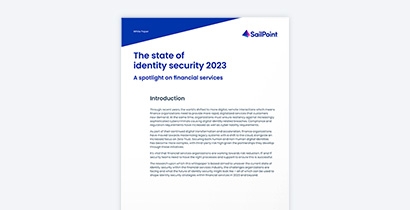Article
What is the difference between authentication and authorisation?
While authentication and authorisation are often used interchangeably, they are separate processes used to protect an organisation from cyberattacks. As data breaches continue to escalate in both frequency and scope, authentication and authorisation are the first line of defence to prevent confidential data from falling into the wrong hands. As a result, strong authentication and authorisation methods should be a critical part of every organisation’s overall security strategy.
Authentication vs. Authorisation
So, what is the difference between authentication and authorisation? Simply put, authentication is the process of verifying who someone is, whereas authorisation is the process of verifying what specific applications, files, and data a user has access to. The situation is like that of an airline that needs to determine which people can come on board. The first step is to confirm the identity of a passenger to make sure they are who they say they are. Once a passenger’s identity has been determined, the second step is verifying any special services the passenger has access to, whether it’s flying first-class or visiting the VIP lounge.
In the digital world, authentication and authorisation accomplish these same goals. Authentication is used to verify that users really are who they represent themselves to be. Once this has been confirmed, authorisation is then used to grant the user permission to access different levels of information and perform specific functions, depending on the rules established for different types of users.
Common Authentication Methods
While user identity has historically been validated using the combination of a username and password, today’s authentication methods commonly rely upon three classes of information:
- What you know: Most commonly, this is a password. But it can also be an answer to a security question or a one-time pin that grants user access to just one session or transaction.
- What you possess: This could be a mobile device or app, a security token, or digital ID card.
- What you are: This is biometric data such as a fingerprint, retinal scan, or facial recognition.
Oftentimes, these types of information are combined using multiple layers of authentication. For example, a user may be asked to provide a username and password to complete an online purchase. Once that’s confirmed, a one-time pin may be sent to the user’s mobile phone as a second layer of security. Combining multiple authentication methods with consistent authentication protocols, organisations can ensure security as well as compatibility between systems.
Common Authorisation Methods
Once a user is authenticated, authorisation controls are then applied to ensure users can access the data they need and perform specific functions such as adding or deleting information—based on the permissions granted by the organisation. These permissions can be assigned at the application, operating system, or infrastructure levels. Two common authorisation techniques include:
- Role-based access controls (RBAC): This authorisation method gives users access to information based on their role within the organisation. For example, all employees within a company may be able to view, but not modify, their personal information such as pay, vacation time, and 401K data. Yet human resources (HR) managers may be given access to all employees’ HR information with the ability to add, delete, and change this data. By assigning permissions according to each person’s role, organisations can ensure every user is productive, while limiting access to sensitive information.
- Attribute-based access control (ABAC): ABAC grants users permissions on a more granular level than RBAC using a series of specific attributes. This may include user attributes such as the user’s name, role, organisation, ID, and security clearance. It may include environmental attributes such as the time of access, location of the data, and current organisational threat levels. And it may include resource attributes such as the resource owner, file name, and level of data sensitivity. ABAC is a more complex authorisation process than RBAC designed to further limit access. For example, rather than allowing all HR managers in an organisation to change employees’ HR data, access can be limited to certain geographical locations or hours of the day to maintain tight security limits.
A Strong Authentication & Authorisation Strategy Is Essential
A sound security strategy requires protecting one’s resources with both authentication and authorisation. With a strong authentication and authorisation strategy in place, organisations can consistently verify who every user is and what they have access to do—preventing unauthorised activity that poses a serious threat. By ensuring all users properly identify themselves and access only the resources they need, organisations can maximise productivity, while bolstering their security at a time when data breaches are robbing businesses of their revenue and their reputation.
See how SailPoint integrates with the right authentication providers.

